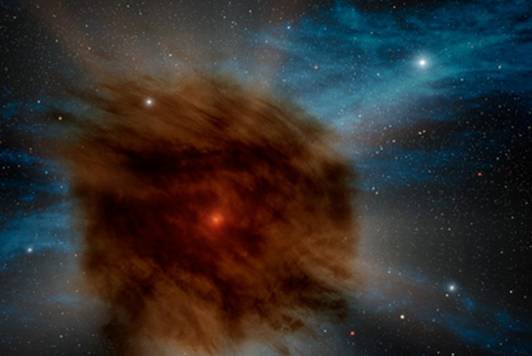
Astronomers using NASA’s Spitzer Space Telescope have discovered that a giant star in a remote galaxy ended its life with a dust-shrouded whimper instead of the more typical band.
Researches suspect that this odd event—the first one of its kind ever viewed by astronomers-was more common early in the universe.
It also hints at what we would see if the brightest star system in our Milky Way galaxy exploded, or went supernova.
The discovery is reported in a paper published online in the APJ.
COLUMBUS, Ohio -- A giant star in a faraway galaxy recently ended its life with a dust-shrouded whimper instead of the more typical bang.
Ohio State University researchers suspect that this odd event -- the first one of its kind ever viewed by astronomers – was more common early in the universe.
It also hints at what we would see if the brightest star system in our galaxy became a supernova.
In a paper published online in the Astrophysical Journal, Christopher Kochanek, a professor of astronomy at Ohio State, and his colleagues describe how the supernova appeared in late August 2007, as part of the Spitzer Space Telescope Deep Wide Field Survey.
The astronomers were searching the survey data for active galactic nuclei (AGN), super-massive black holes at the centers of galaxies. AGN radiate enormous amounts of heat as material is sucked into the black hole. In particular, the astronomers were searching for hot spots that varied in temperature, since these could provide evidence of changes in how the material was falling into the black hole.
See the website for more details.
http://researchnews.osu.edu/archive/dustynova.htm (SY)
